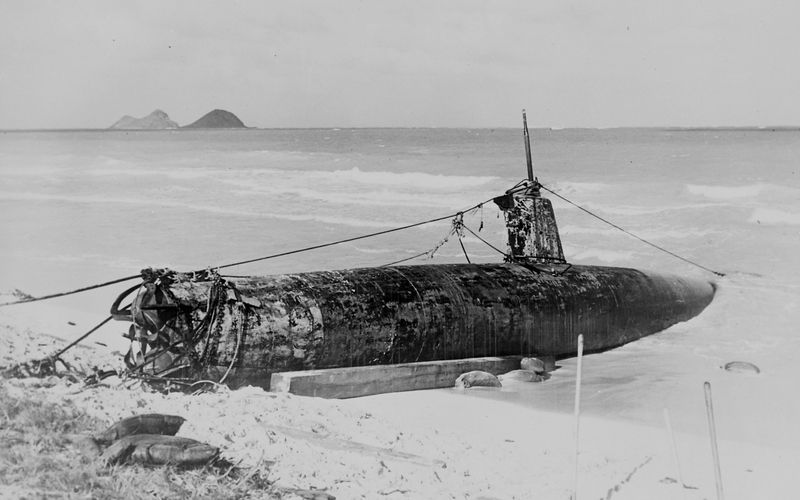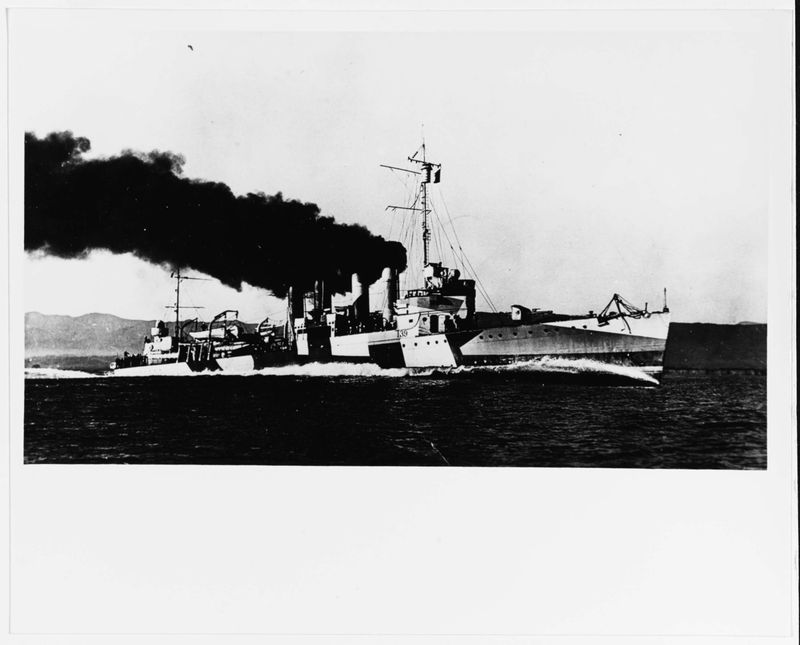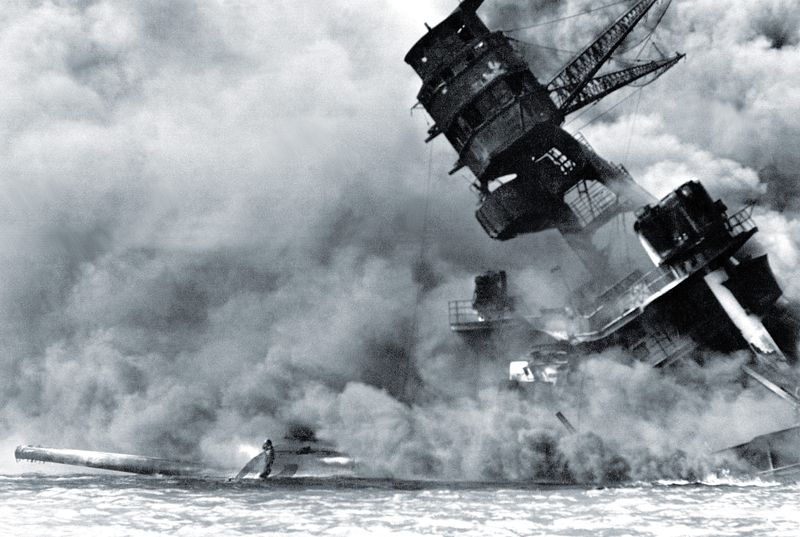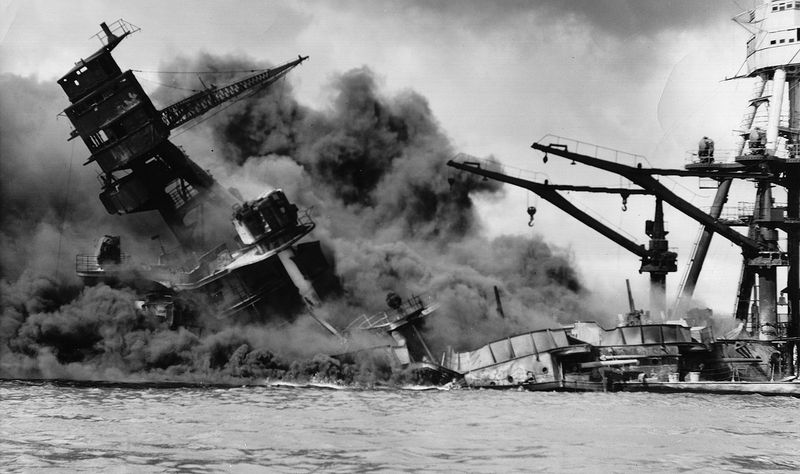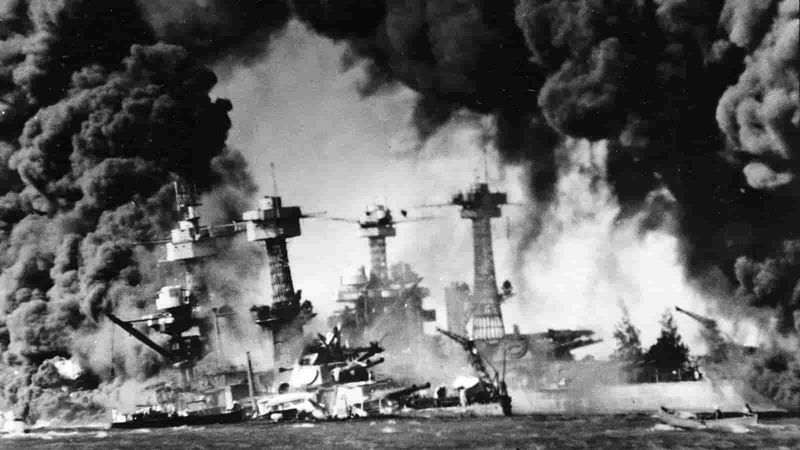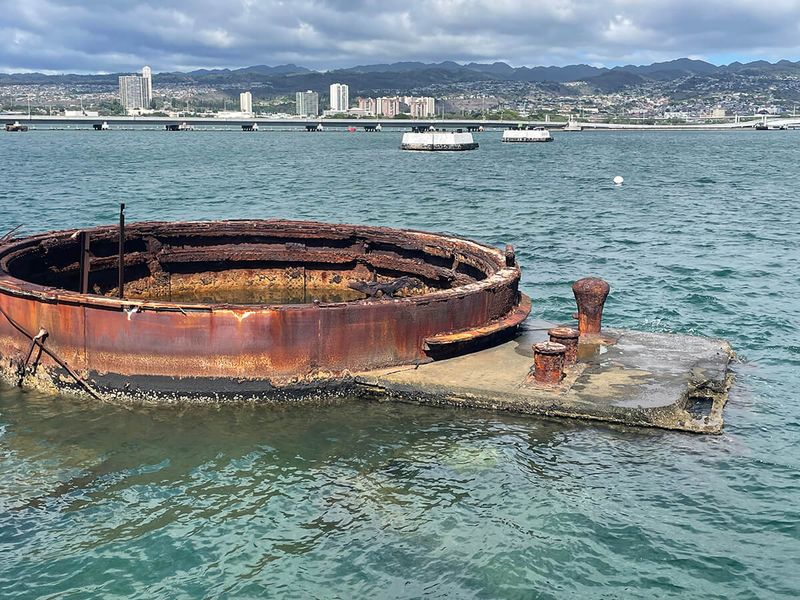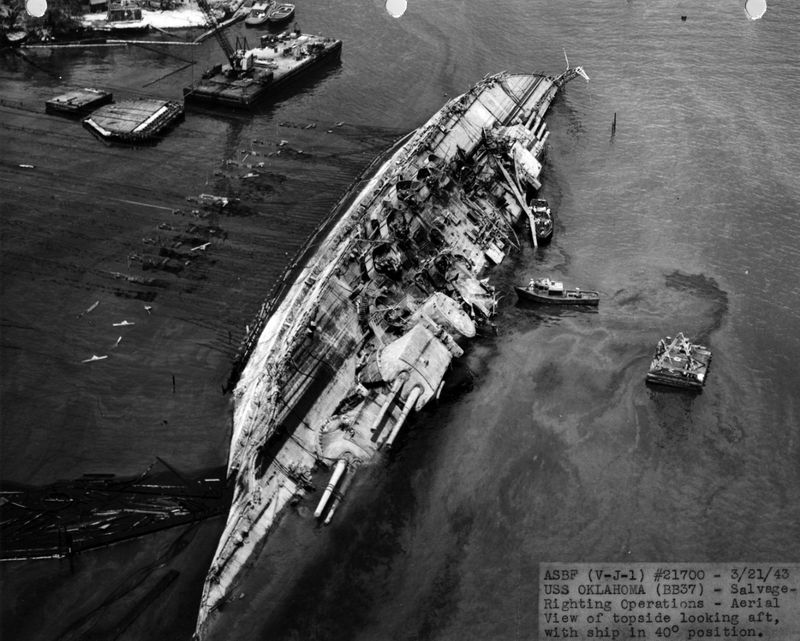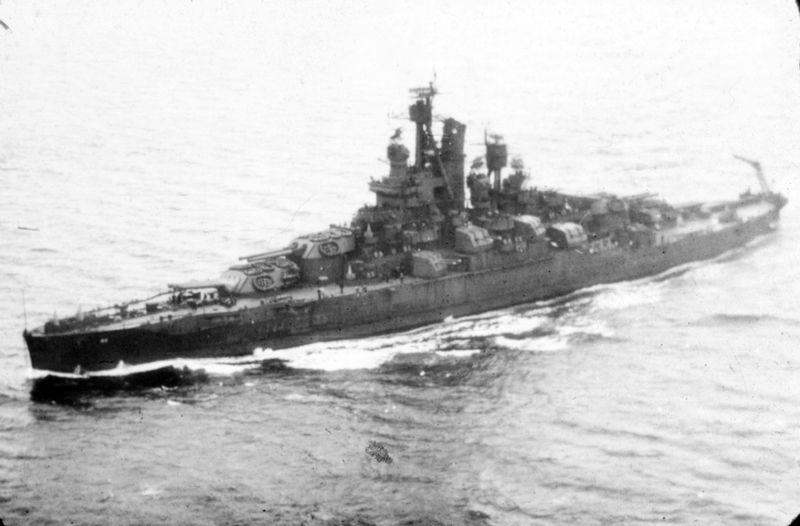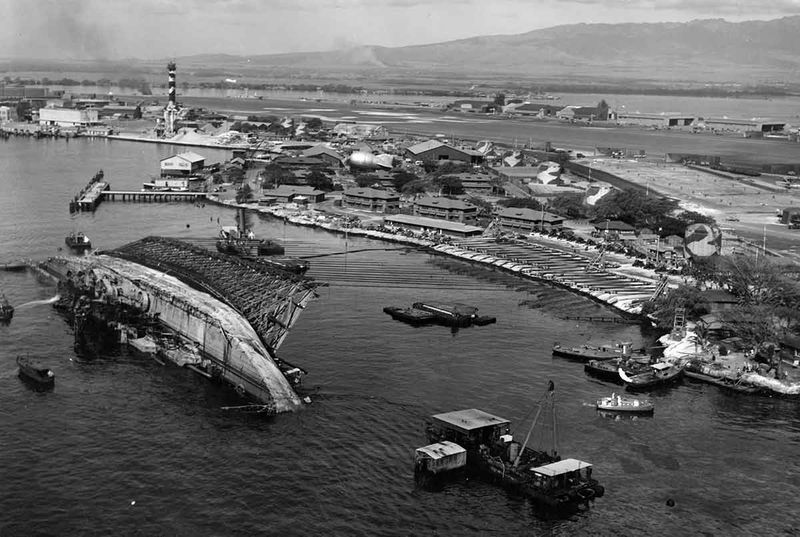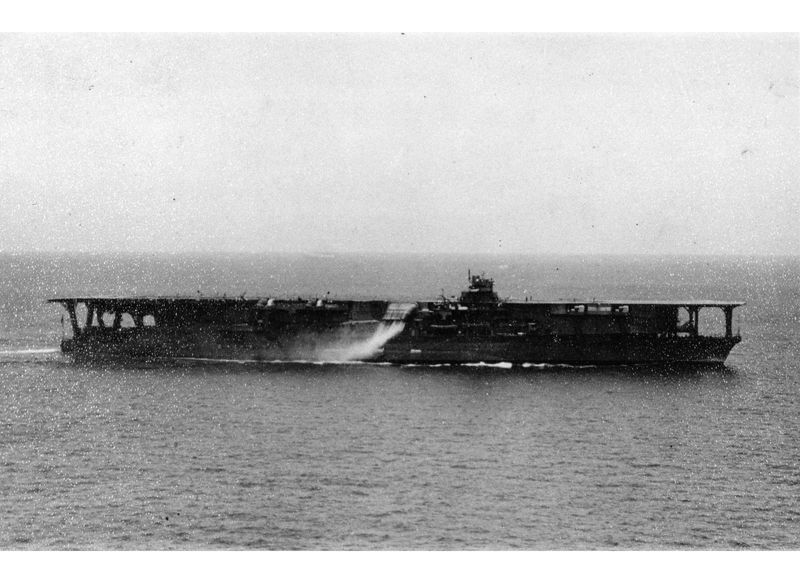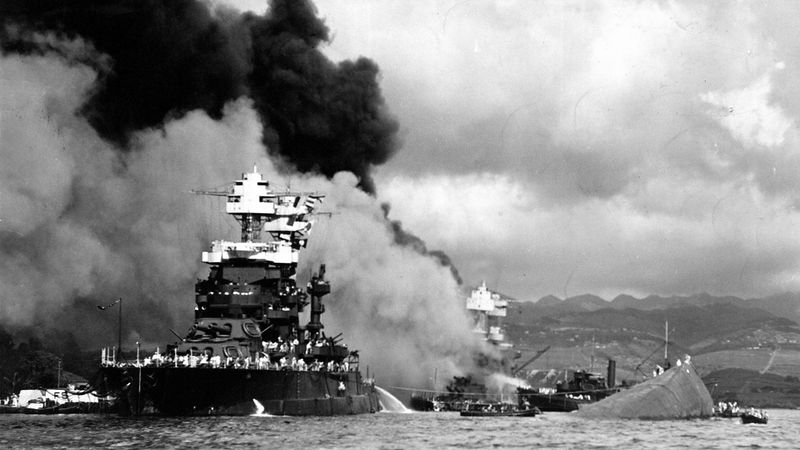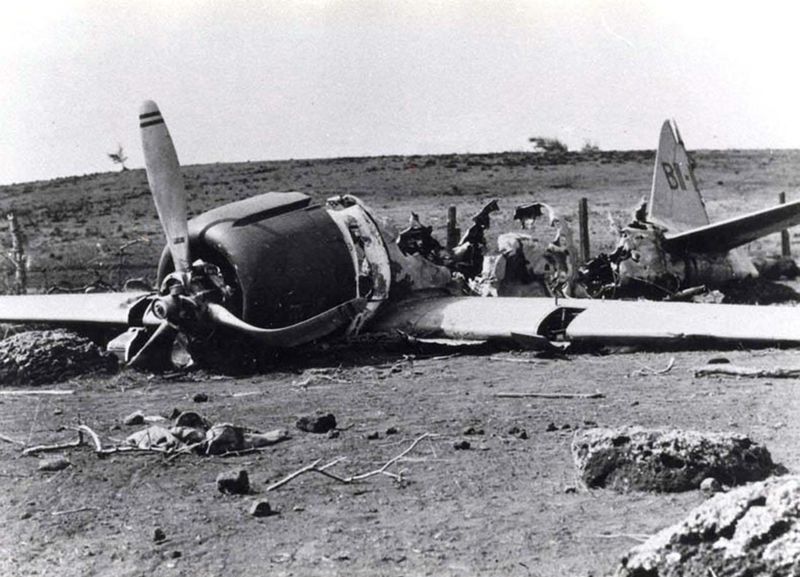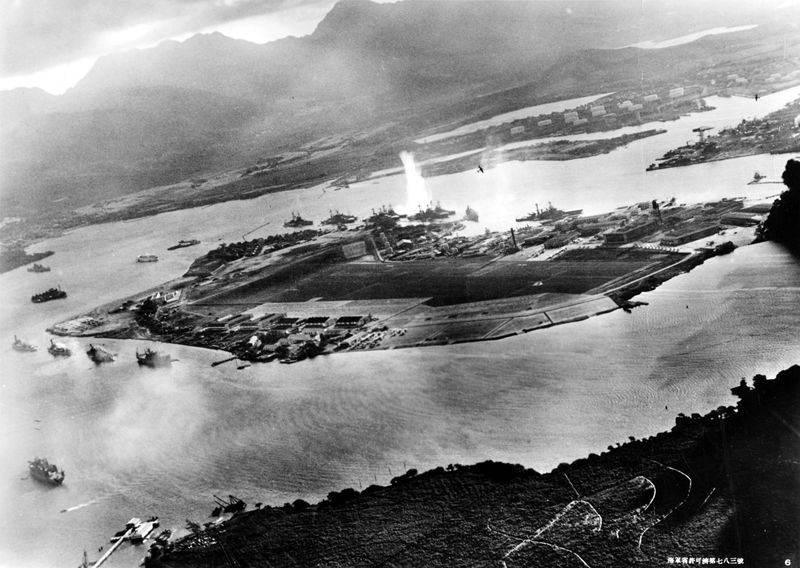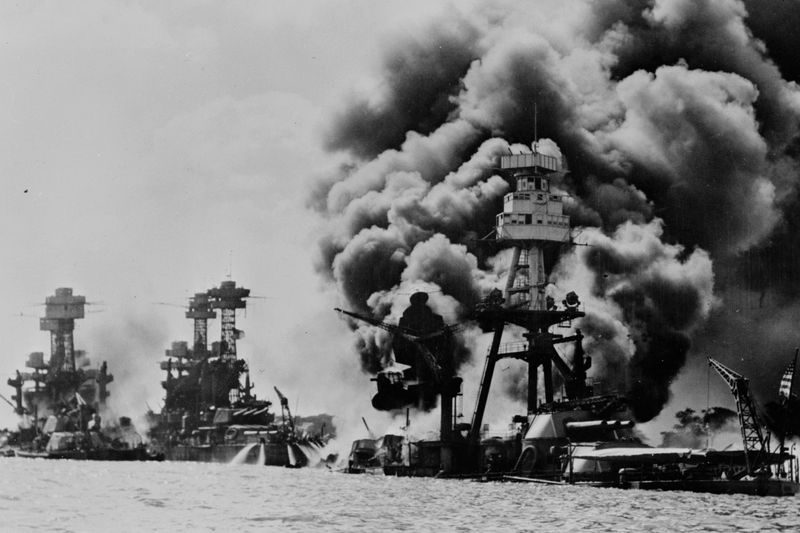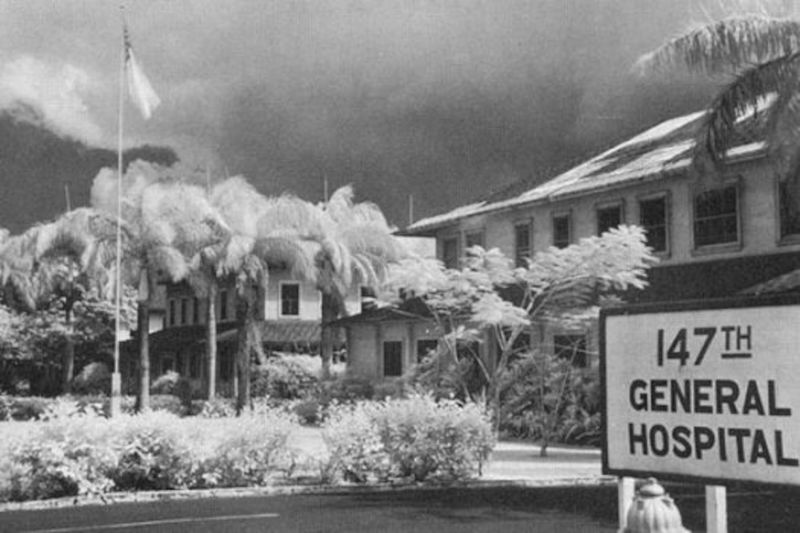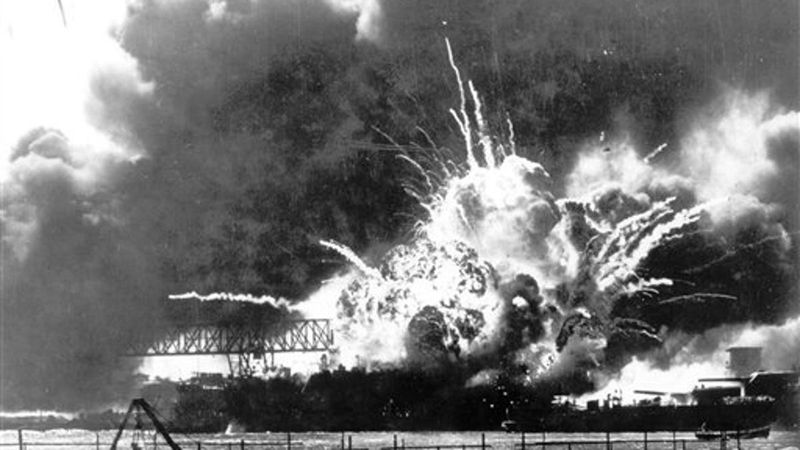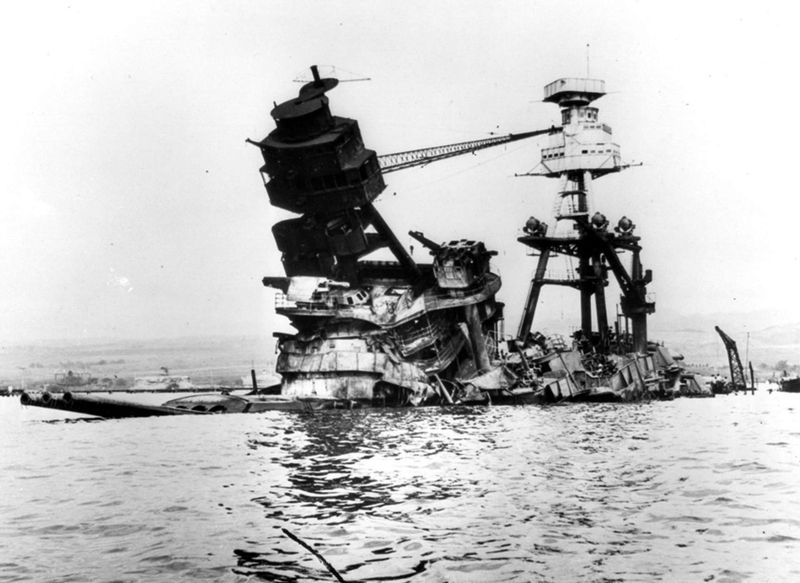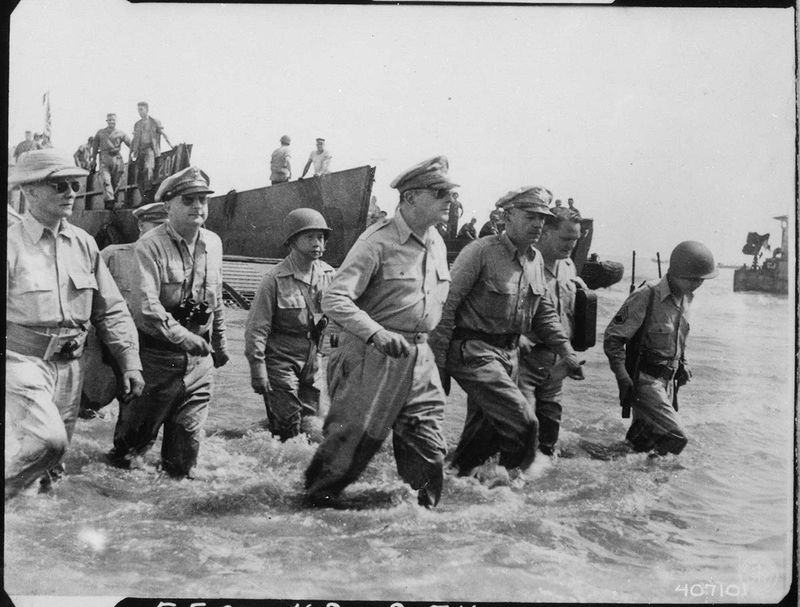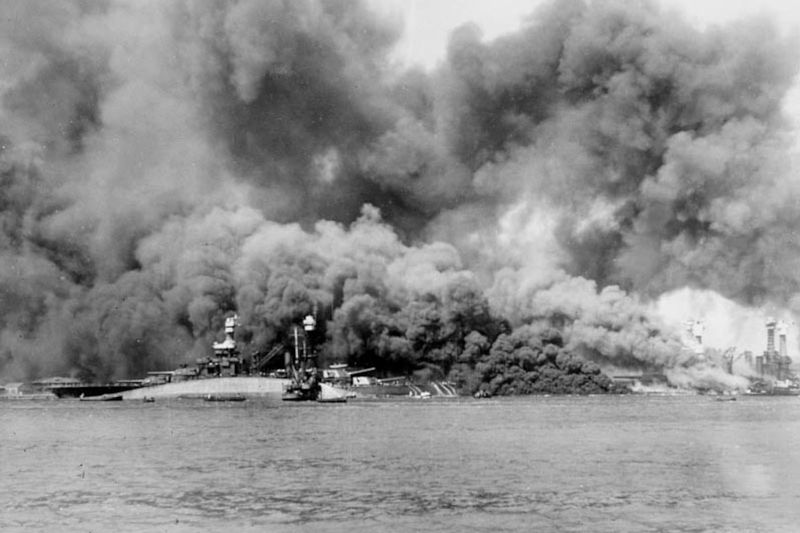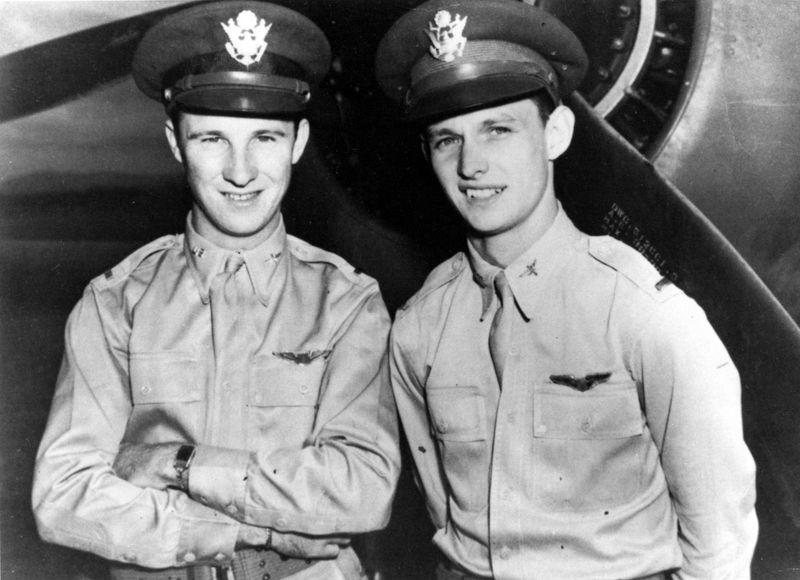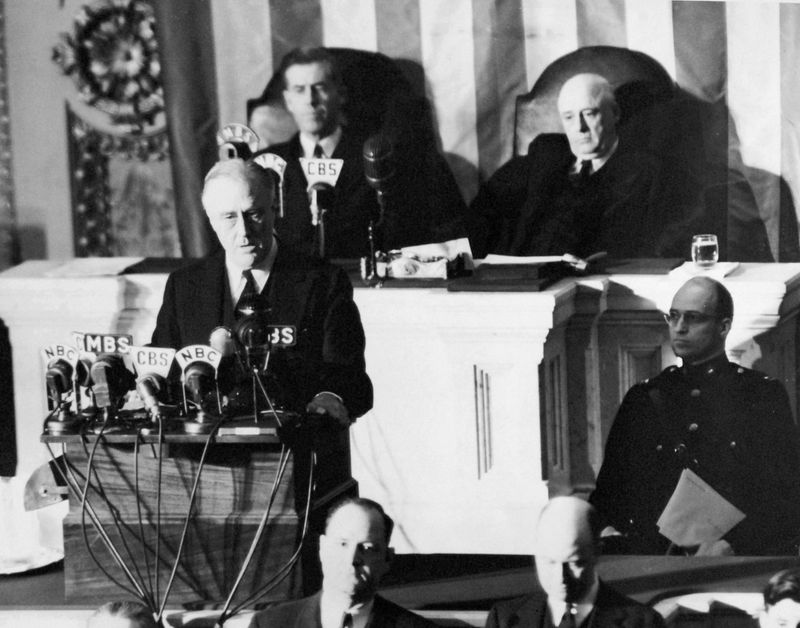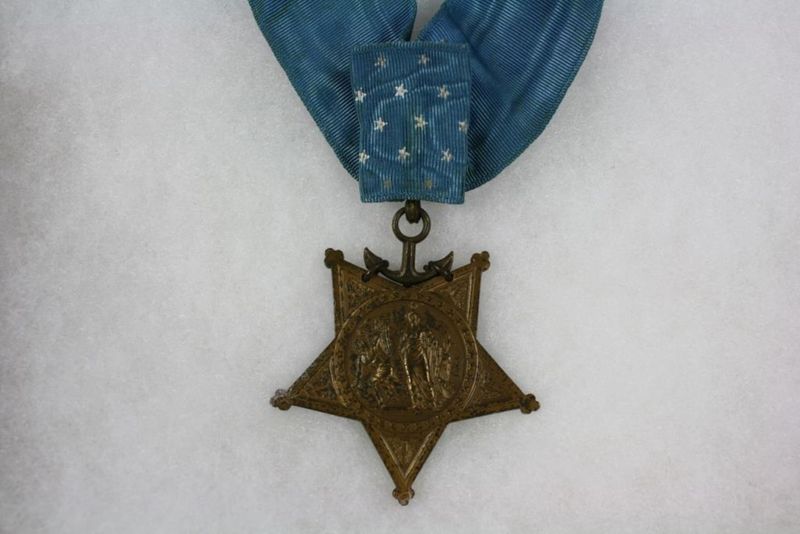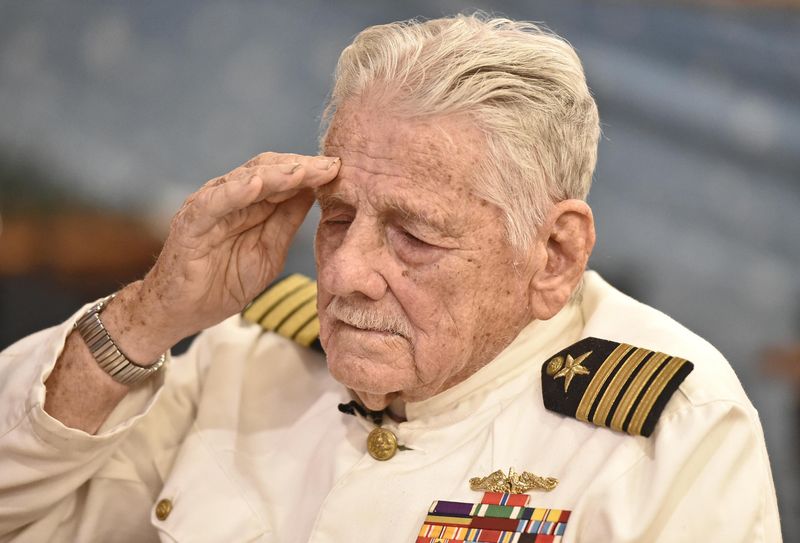23 Facts About Pearl Harbor That Most Americans Don’t Know
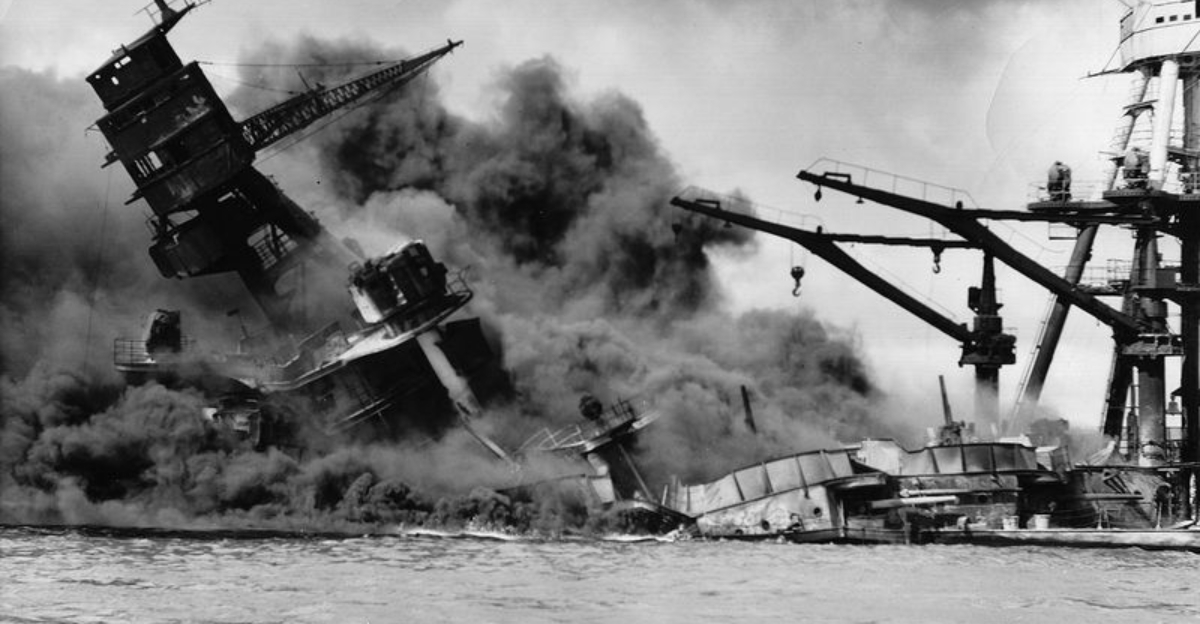
Pearl Harbor—December 7, 1941—a day that shook the world and altered the course of history forever.
But beyond the well-documented battleships and FDR’s legendary speech, there’s a treasure trove of lesser-known stories, bizarre coincidences, and downright jaw-dropping facts that even the most dedicated history buffs might have overlooked.
Did you know that a radar blip warning of the incoming attack was brushed off as a squadron of American B-17s? Or that a Japanese mini-sub was actually spotted before the attack, but the warning went largely ignored? And let’s not forget the curious case of a ship that sank twice!
Buckle up, because we’re diving into the hidden corners of history—where espionage, fate, and a sprinkle of absurdity collide. With a dash of humor and a side of intrigue, get ready for a time-traveling adventure that will make you see Pearl Harbor in a whole new light!
1. Japan Had Five Midget Submarines
Pearl Harbor wasn’t just about airplanes and battleships, oh no! The Japanese brought along five midget submarines to join the party.
Their mission? Sneak into the harbor before everyone else and cause some underwater chaos. However, the plan didn’t quite hit the mark. One of these tiny terrors was captured before it even got to show off its moves! Despite their size, these submarines were a significant part of the attack strategy.
Imagine the surprise on the faces of those tasked with their capture—a not-so-miniature adventure of its own for sure!
2. A U.S. Ship Fired the First Shot
Surprise, surprise! Although Japan launched the infamous attack, the first shot was actually fired by the U.S.
The USS Ward, a destroyer with a knack for timing, sank a Japanese midget submarine lurking in the waters about an hour before the aerial assault began.
This early morning wake-up call wasn’t just any shot – it was the shot heard ‘round the world—or at least around the Pacific! While the main attack was still to come, this preemptive strike added a twist to the day’s unfolding drama.
3. Most Torpedoes Were Modified
Pearl Harbor was shallower than a kiddie pool, so the Japanese had to get creative with their torpedoes.
Enter the wooden fins! These nifty add-ons kept the torpedoes from plummeting straight into the mud. Instead of becoming marine archaeology pieces, they skimmed just below the water’s surface toward their targets. This modification was crucial for the attack’s success.
Engineering at its finest, even if the purpose was far from friendly. The wooden fin innovation is a testament to the lengths the Japanese went to ensure their strategy sailed smoothly—literally!
4. There Were Two Attack Waves
Why stop at one when two’s company? The attack on Pearl Harbor came in two waves.
The first wave, like an unwanted guest, targeted airfields and battleships. The second wave, just as relentless, focused its fury on smaller ships and other facilities. Each wave carried its own destructive mission, ensuring the attack left a lasting impact.
Despite the chaos, the plan was executed with chilling precision. The idea of waves not only applied to the harbor’s waters but also to the strategic onslaught from above. A double dose of devastation no one saw coming!
5. The Japanese Considered a Third Wave
Third time’s the charm, or so they thought. The Japanese debated launching a third wave but hesitated, fearing the U.S. might catch on to their tactics.
Deciding against pushing their luck, they left the battlefield after two waves. This cautious decision may have spared more devastation, but it also left certain targets untouched.
The consideration of a third attack reflects their initial confidence and ultimate restraint. It’s a historical ‘what if’ that leaves historians pondering how different the day—and the war—might have been had they chosen otherwise.
6. The USS Arizona Still Leaks Oil
Even decades after its fiery demise, the USS Arizona continues to weep.
Known as the ‘tears of the Arizona,’ small amounts of oil still seep from the sunken battleship. This slow leakage serves as a poignant reminder of the lives lost and the ship’s tragic end. Visitors to the memorial can often see these oil slicks, a silent tribute to the enduring legacy of Pearl Harbor.
Despite the passage of time, the Arizona remains a guardian of history, its tears mingling with the waters as a testament to resilience and memory.
7. The USS Oklahoma Flipped Over
Talk about a topsy-turvy day! The USS Oklahoma didn’t just sink – it completely flipped over during the attack.
The sudden capsizing trapped hundreds of sailors inside, turning the ship into a veritable tomb. Despite desperate rescue efforts, many lives were lost. The Oklahoma’s fate was one of the most tragic outcomes of the attack, symbolizing the chaos and devastation that struck so swiftly.
The image of the capsized battleship remains etched in history, a stark reminder of the unpredictability of war and the sacrifices made by those at sea.
8. The USS Nevada Almost Escaped
Like a scene straight out of an action movie, the USS Nevada was the only battleship to make a daring dash for freedom during the attack.
Gaining steam to escape to open water, it was ultimately hit and beached. This audacious attempt to flee showcased the crew’s bravery and quick thinking amidst the chaos. Though the Nevada didn’t make it to the open sea, its spirited escape effort became legendary.
The ship’s bold moves provided a glimmer of hope during a dark day, proving that even in the direst situations, courage can steer the course.
9. Some Ships Were Salvaged and Returned to War
Out of the ashes rose resilience! Several battleships, like the USS West Virginia, USS Tennessee, and USS California, were salvaged, repaired, and returned to the fight.
Talk about a comeback! Despite the heavy damage endured during the attack, these vessels underwent extensive restoration. Their return to action symbolized American resolve and ingenuity. This salvage operation was no small feat, requiring effort and expertise.
These ships not only rose from the depths but also returned to the forefront of battles. Their stories are a testament to perseverance and the relentless spirit of recovery.
10. The Japanese Missed the U.S. Aircraft Carriers
In a twist of fate, the U.S. aircraft carriers—Enterprise, Lexington, and Saratoga—were not present during the attack.
Their absence spared America’s most prized naval assets. While the Japanese dealt significant damage, missing these carriers was a strategic oversight. This stroke of luck enabled the U.S. Navy to recover and retaliate in the Pacific Theater.
The carriers went on to play crucial roles in subsequent naval battles, turning the tide in favor of the Allies. Their absence during the attack remains one of Pearl Harbor’s most fortuitous moments, altering the course of history.
11. A Radar Operator Spotted the Attack Early
One eagle-eyed radar operator spotted the incoming Japanese planes early. However, the warning was dismissed as a flight of American B-17 bombers.
This oversight allowed the attack to proceed largely unchallenged. The radar detection exemplifies the challenges of early warning systems and the importance of communication. While the operator’s alert didn’t prevent the attack, it highlighted the potential of radar technology in modern warfare.
This early detection was a missed opportunity, illustrating how small decisions can have significant impacts. The incident underscores the critical role of vigilance and quick response.
12. A Japanese Pilot Got Lost and Landed in Hawaii
Talk about a wrong turn! Japanese pilot Shigenori Nishikaichi got lost during the attack and crash-landed on Niʻihau, a small Hawaiian island.
The locals, initially unaware of the ongoing war, treated him hospitably. However, tensions rose once news of the attack reached them. Nishikaichi’s presence sparked a series of events leading to his demise at the hands of the islanders.
This peculiar postscript to the attack shows how war can reach even the most isolated places. It’s a story of cultural collision and quick thinking by the islanders, turning the tide on their unexpected visitor.
13. The U.S. Had Deciphered Japanese Codes
Crack the code! The U.S. had deciphered Japanese diplomatic messages, providing some clues about impending actions but not specific locations.
This cryptographic achievement showcased the power of intelligence efforts but also their limitations. While hints were gathered, the exact target of Pearl Harbor remained elusive. This partial breakthrough in codebreaking was both a triumph and a challenge, underscoring the complexities of wartime intelligence.
Despite not preventing the attack, it laid the groundwork for future successes in codebreaking during the war. The race to crack codes became a vital element of the broader conflict strategy.
14. Japan Declared War 30 Minutes Too Late
Timing is everything, right? Japan’s formal declaration of war was supposed to coincide with the attack, but due to delays, it arrived 30 minutes too late.
This misstep added to the outrage over the surprise attack, framing Japan as underhanded. The delay turned a strategic assault into a diplomatic blunder, fueling U.S. resolve to respond. This timing error affected wartime perceptions and justified America’s entry into the conflict.
It’s a reminder of how small administrative hiccups can have vast geopolitical repercussions. The delayed declaration became a pivotal point in the unfolding global drama.
15. Japanese Fighters Targeted Hospitals
In an act that defies the rules of engagement, Japanese fighters mistakenly targeted hospitals during the attack.
This resulted in tragic civilian casualties, including doctors and nurses who were caught in the crossfire. The bombing of non-military targets added to the horror of the attack, showing the indiscriminate nature of war.
These incidents further galvanized American public opinion against Japan, intensifying the call to action. The targeting of hospitals highlighted the moral complexities of warfare, where unintended errors can lead to devastating consequences. It stands as a stark reminder of the human cost inherent in conflict.
16. 2,403 Americans Passed away
The attack on Pearl Harbor resulted in the loss of 2,403 American lives, marking one of the darkest days in U.S. history.
Both military personnel and civilians were among the fallen, victims of the surprise assault. This staggering toll underscored the devastating impact of the attack, which forever altered the nation’s course.
The remembrance of those lost continues to be a solemn duty, ensuring their sacrifice is never forgotten. Ceremonies and memorials honor their memory, providing a sense of closure and a commitment to peace. The tragedy serves as a reminder to remain vigilant in the face of threats.
17. Almost 1,200 Were From the USS Arizona
Of the 2,403 Americans who passed, nearly 1,200 were from the USS Arizona alone.
The battleship’s destruction accounted for more than half of the total fatalities, cementing its place as a symbol of the attack’s fury. The ship remains a tomb for over 900 sailors, whose bravery and sacrifice are honored at the memorial.
The Arizona’s loss represents the personal stories of those who served and the collective grief of a nation. Remembering the Arizona is a solemn act of respect and reverence, illustrating the profound impact of Pearl Harbor on individual lives and collective memory.
18. Only 64 Japanese Soldiers Passed Away
While the attack on Pearl Harbor resulted in heavy American casualties, only 64 Japanese soldiers lost their lives. Most were pilots whose planes met fiery ends.
This stark difference in death tolls highlights the asymmetry of the conflict. The limited Japanese losses were attributed to the surprise nature of the attack and the focus on maximizing damage to U.S. forces.
The casualty contrast underscores the tactical success of the operation from the Japanese perspective, though it ultimately galvanized U.S. resolve. This disparity remains a point of reflection on the human cost and strategic impact of the day’s events.
19. Fires Burned for Days
The attack’s aftermath was marked by raging fires that consumed parts of Pearl Harbor for days. These infernos added to the chaos, complicating rescue efforts and salvage operations.
The fires symbolized the destruction unleashed on that fateful day, leaving a charred landscape in their wake. Despite the devastation, the resilience of those who fought the flames was remarkable, preventing further damage.
The lingering fires became an enduring image of Pearl Harbor’s destruction, encapsulating the immediate and long-lasting impact of the attack. Recovery required time, effort, and a sense of unity to rebuild what was lost.
20. One U.S. Soldier Took Down a Plane With a Pistol
In an incredible display of grit and nerve, Army Air Corps pilot Kenneth Taylor took down a Japanese plane with just his .45-caliber pistol.
Talk about precision! As the plane swooped low, Taylor seized the moment, firing at the aircraft with astounding accuracy. His actions became legendary, exemplifying the courage and quick reflexes that defined the defense of Pearl Harbor.
Taylor’s unconventional shot is a testament to the fierce determination of those caught in the attack. This tale of heroism is a reminder that even the smallest acts of defiance can have a significant impact in times of crisis.
21. FDR’s Speech Was Almost Different
President Franklin D. Roosevelt’s iconic “Day of Infamy” speech almost had a different opening line.
Originally, it referred to “world history” instead of “infamy,” making a last-minute change that resonated through history. The phrase perfectly captured the nation’s outrage and resolve. This rhetorical pivot became a defining moment of FDR’s leadership, uniting the American public in response to the attack.
The speech’s enduring power lies in its ability to encapsulate the gravity of the situation and the call to action that followed. Roosevelt’s words not only defined the day but also set the tone for the nation’s wartime efforts.
22. There Were Only 15 Medals of Honor Awarded
Despite the widespread heroism displayed during the Pearl Harbor attack, only 15 Medals of Honor were awarded.
These distinguished honors recognized exceptional acts of valor amidst the chaos. The recipients demonstrated extraordinary courage, often at great personal risk, to save others and defend their country. The limited number of awards reflects the high standards of recognition for such bravery.
Each medal tells a story of personal sacrifice and heroism, contributing to the legacy of Pearl Harbor. These honors serve as a reminder of the individual acts of bravery that collectively defined the response to the attack.
23. A Pearl Harbor Veteran Witnessed 9/11
The last known survivor of Pearl Harbor, Ray Chavez, lived to witness the 9/11 attacks, drawing chilling parallels between the two events.
His life spanned two defining moments of American history, each marked by surprise and devastation. Chavez’s perspective provided a unique bridge between generations, highlighting the enduring impact of such attacks on national consciousness.
His reflections offered insights into resilience and recovery, illustrating the human capacity to endure and overcome. Chavez’s story underscores the importance of remembering the past while navigating challenges of the present, serving as a testament to the enduring spirit of those who lived through such times.

